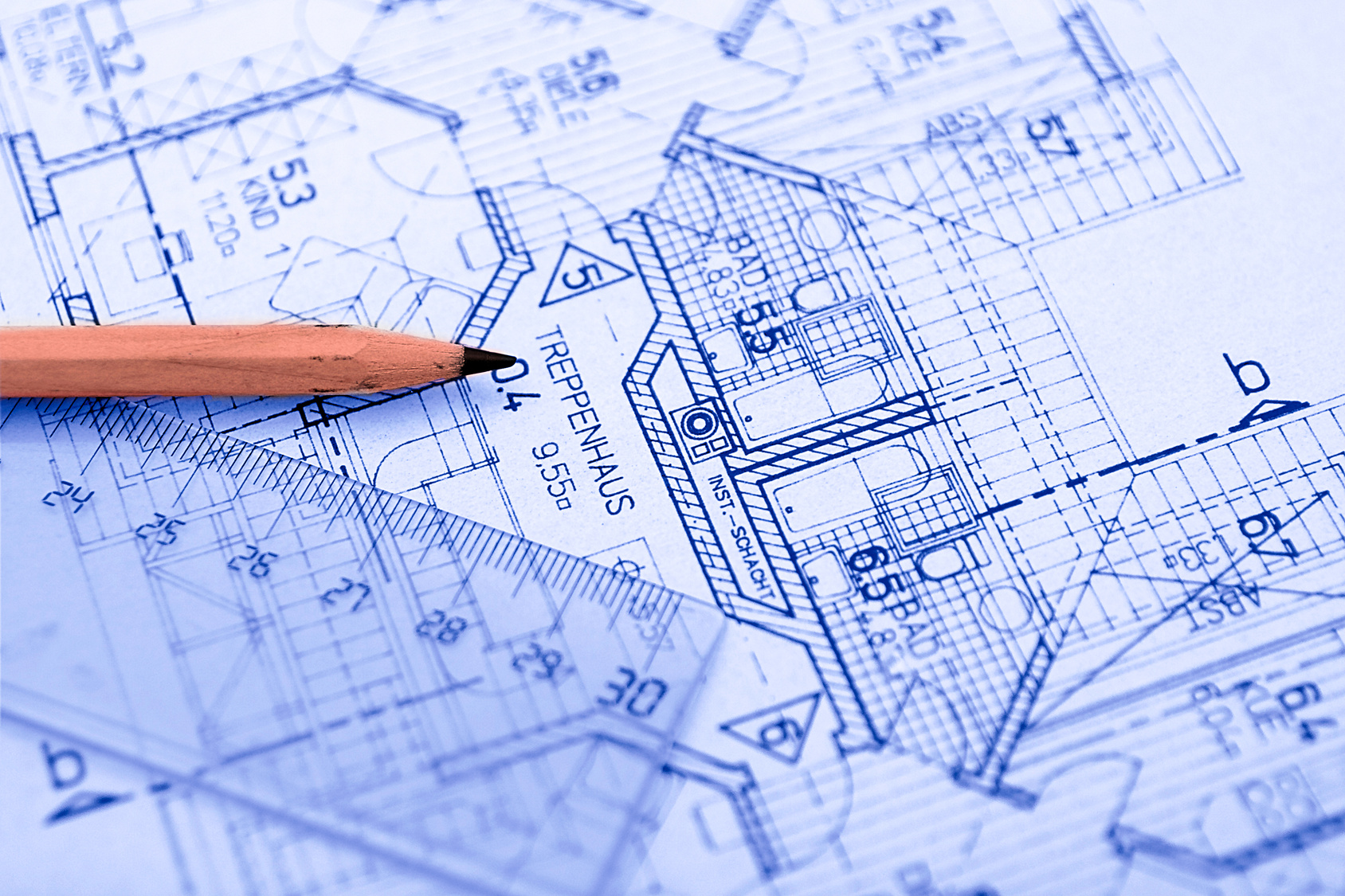
I am a

student

institution

career professional
I need help with
Career Selection & Planning
Find your best-fit career, stream, course or college through advanced assessments and expert guidance.
college applications
Get admits from your dream colleges through end-to-end applications guidance for overseas and liberal arts universities.
I am interested in
Career Development Programs
State-of-the-art career assessments, expert guidance, and more to help students plan their career paths.
Career Advancement Programs
Expert-led MUN training programs, inspirational career talks and more to help students get that added edge.
I am interested in
Getting Certified (ICCC)
Become an International Certified Career Coach through a multi-level credentialing program by Mindler & CDA (USA).
Partnering with Mindler
Expand and grow your career counselling practice by leveraging the full force of Mindler’s career guidance platform.
Ready to discover your perfect career?
Enter your email id to take the Orientation Style test for free.
CAREER COUNSELLING PROGRAMS
Class 8-9
Stream & Subject SelectionAdvanced assessment & personalised guidance to help you select the perfect stream and subjects that align you to the right careers.
Class 10-12
Career Selection & PlanningExpert guidance & 5-dimensional assessment to help you discover your perfect career and choose the right course and college.
Graduates
Career Selection & Development5-dimensional assessment & superior guidance to help you discover your perfect career and choose the best next step.
Thank you for contacting us!
One of our team members will respond in 2 working days to resolve your query. If your query is urgent, you can alternatively call our career helpline.
Ready to pave your way to your dream college?
Leave your details below and we will get in touch shortly.
COLLEGE APPLICATION PROGRAMS
Overseas Application
End-to-end overseas admissions guidance to help you build the perfect applications for your target universities.
Liberal Arts Application
Comprehensive guidance and personalised application development for admissions to Liberal Arts programs.
Thank you for contacting us!
One of our team members will respond in 2 working days to resolve your query. If your query is urgent, you can alternatively call our career helpline.
Ready to give students the best of career guidance?
Leave your details below and we will get in touch shortly.
Career Development Programs
Career Development &
Planning Ecosystem
State-of-the-art assessment & end-to-end career guidance to help students discover their perfect career.
Thank you for contacting us!
One of our team members will respond in 2 working days to resolve your query. If your query is urgent, you can alternatively call our career helpline.
Ready to give your students the added edge?
Leave your details below and we will get in touch shortly.
Career Advancement Programs
MUN Training Program
Expert-led training and comprehensive guidance sessions to help students excel at MUN conferences.
Mindler Talks
Career awareness and inspirational talks for students with professionals who have achieved success in their fields.
Thank you for contacting us!
One of our team members will respond in 2 working days to resolve your query. If your query is urgent, you can alternatively call our career helpline.
Ready to upgrade your career counselling skills?
Enter your email id to start your ICCC application.
Getting Certified (ICCC)
International Certified
Career Coach (ICCC)
A 3-month program with emphasis on global practices, experiential learning & career guidance tools.
Thank you for contacting us!
One of our team members will respond in 2 working days to resolve your query. If your query is urgent, you can alternatively call our career helpline.
Ready to grow as a counsellor?
Leave your details below and we will get in touch shortly.
Partnering with Mindler
Mindler Partner Program
World-class career assessment platform & tools to help you scale up your career counselling practice.
Thank you for contacting us!
One of our team members will respond in 2 working days to resolve your query. If your query is urgent, you can alternatively call our career helpline.
Breaking News
- Flexible Remote Work Opportunity for University Students: Earn $100–$250 Per Month ...Read More
- Ministry of Education and Sports Azerbaijan Government Scholarships For 2025-2026 Academic Year ...Read More
- Government Sponsorship Undergraduate Admission Lists 2025-26 for Makerere University ...Read More
- Ministry of Education And Sports: Egyptian Government Scholarships 2025-2026 Academic Year ...Read More
- Ground Breaker Full Scholarship for girls to study Software Engineering 2025 July Intake ...Read More
- Tony Elumelu Foundation Entrepreneurship Programme (TEEP) 2025 for young African Entrepreneurs ...Read More
- DESIGNING FUTURES 2050 International Design Competition 2025 (€15,000 prize) ...Read More
- Ground Breaker Full time Scholarship for girls to study Software Engineering 2025 Intake ...Read More
- Ministry of Education And Sports Algerian Vocational Training Scholarships for 2024-2025 AY ...Read More
- Ministry of Education and Sports Advert for the Algerian Government Scholarships for 2024-2025 ...Read More
Architect
Every doorway, wall, and window in every building is where it is because someone decided to put it there. Someone also decided what building materials would be used, what traffic patterns people would follow, and even how they would feel when entering or leaving the building.Architect Plan and design structures, such as private residences, office buildings, theaters, factories, and other structural property.
Add to FavouritesEvery doorway, wall, and window in every building is where it is because someone decided to put it there. Someone also decided what building materials would be used, what traffic patterns people would follow, and even how they would feel when entering or leaving the building.Architect Plan and design structures, such as private residences, office buildings, theaters, factories, and other structural property.
Daily/Routine Tasks
Architects typically do the following:
1. Meet with clients to determine objectives and requirements for structures
2. Estimate the amount of required materials, equipment, and construction time
3. Prepare structure specifications
4. Direct workers who prepare drawings and documents
5. Prepare scaled drawings with computer software and by hand
6. Prepare contract documents for building contractors
7. Manage construction contracts
8. Visit worksites to ensure that construction adheres to architectural plans
9. Seek new work by marketing and giving presentations
People need places to live, work, play, learn, shop, and eat. Architects are responsible for designing these places. They work on public or private projects and design both indoor and outdoor spaces. Architects can be commissioned to design anything from a single room to an entire complex of buildings.
Architects discuss the objectives, requirements, and budget of a project with clients. In some cases, architects provide various predesign services, such as feasibility and environmental impact studies, site selection, cost analyses, and design requirements.
After discussing and agreeing on the initial proposal with clients, architects develop final construction plans that show the building's appearance and details for its construction. Accompanying these plans are drawings of the structural system; air-conditioning, heating, and ventilating systems; electrical systems; communications systems; plumbing; and, possibly, site and landscape plans. In developing designs, architects must follow state and local building codes, zoning laws, fire regulations, and other ordinances, such as those requiring easy building access for people who are disabled.
Computer-aided design and drafting (CADD) and building information modeling (BIM) have replaced traditional drafting paper and pencil as the most common methods for creating designs and construction drawings. However, hand-drawing skills are still used, especially during the conceptual stages of a project.
As construction proceeds, architects may visit building sites to ensure that contractors follow the design, keep to the schedule, use the specified materials, and meet work-quality standards. The job is not complete until all construction is finished, required tests are conducted, and construction costs are paid.
Architects also may help clients get construction bids, select contractors, and negotiate construction contracts.
Architects often collaborate with workers in related occupations, such as civil engineers, urban and regional planners, interior designers, and landscape architects.
Important Qualities
Analytical skills. Architects must understand the content of designs and the context in which they were created. For example, architects must understand the locations of mechanical systems and how those systems affect building operations.
Communication skills. Architects share their ideas, both in oral presentations and in writing, with clients, other architects, and workers who help prepare drawings. Many also give presentations to explain their designs.
Creativity. Architects design the overall look of houses, buildings, and other structures. Therefore, the final product should be attractive and functional.
Organizational skills. Architects often manage contracts. Therefore, they must keep records related to the details of a project, including total cost, materials used, and progress.
Technical skills. Architects use computer-aided design and drafting (CADD) technology to create plans as part of integrated building information modeling (BIM).
Visualization skills. Architects must be able to see how the parts of a structure relate to each other. They also must be able to visualize how the overall building will look once completed.
1 2 3 National Diploma in Architecture (Uganda Technical College - Lira).
4 5 National Diploma in Architecture (Uganda Technical College Bushenyi).
6 National Diploma in Architecture (Uganda Technical College Elgon).
7 National Diploma in Architecture (Uganda Technical College - Lira).
8 Bachelor of Architecture (International University of East Africa).
-
 Ministry of Education And Sports: Egyptian Government Scholarships 2025-2026 Academic Year
Full Scholarship
Ministry of Education And Sports: Egyptian Government Scholarships 2025-2026 Academic Year
Full Scholarship
Know more -
 Priscilla Namwenje, A Ugandan Architect wins LafargeHolcim Next Generation Top Prize
Connective Infrastructure
Priscilla Namwenje, A Ugandan Architect wins LafargeHolcim Next Generation Top Prize
Connective Infrastructure
Know more -
TU Delft Summer School Scholarships 2024 for Students (Fully Funded to Delft, Netherlands) Summer School Program for students doing Architecture or Urban Planning
Know more -
 Enabel and PSFU Work Readiness Program for recent graduates from Uganda
Connecting graduates to hundreds of Employers
Enabel and PSFU Work Readiness Program for recent graduates from Uganda
Connecting graduates to hundreds of Employers
Know more -
 Makerere University invites private undergraduate applicants for academic year 2017-2018
Private sponsorship scheme applications for undergraduate are open
Makerere University invites private undergraduate applicants for academic year 2017-2018
Private sponsorship scheme applications for undergraduate are open
Know more
Draw Inspiration from time tested individuals
-
 Meet Architect Wasswa Moses, aka The Architect of Kyanja, designer of over 2000 properties in Uganda
Meet Architect Wasswa Moses, aka The Architect of Kyanja, designer of over 2000 properties in Uganda
Watch Interview -
 Celebrating Women in Architecture in Uganda
Celebrating Women in Architecture in Uganda
Watch Interview -
 The journey of Architecture in Uganda Part 3 Featuring Arch Dr. Namuganyi Lilian
The journey of Architecture in Uganda Part 3 Featuring Arch Dr. Namuganyi Lilian
Watch Interview -
 The journey of Architecture in Uganda Part 2 Featuring Arch. Mugamba Kabuzi Davy, Arch Kajumba Tom, Arch Nankya Collins Dolores
The journey of Architecture in Uganda Part 2 Featuring Arch. Mugamba Kabuzi Davy, Arch Kajumba Tom, Arch Nankya Collins Dolores
Watch Interview -
 The journey of Architecture in Uganda Part 1 Featuring Arch. Mugamba Kabuzi Davy, Arch Kajumba Tom, Arch Nankya Collins Dolores
The journey of Architecture in Uganda Part 1 Featuring Arch. Mugamba Kabuzi Davy, Arch Kajumba Tom, Arch Nankya Collins Dolores
Watch Interview -
 Why I left architecture to study Computer Science
Why I left architecture to study Computer Science
Watch Interview -
 The contentment in living your childhood career dream, Meet Marvin Tumwine
The contentment in living your childhood career dream, Meet Marvin Tumwine
Watch Interview -
 Architects are gods
Architects are gods
Watch Interview -
 Bachelor of Architecture from the student Perspective
Bachelor of Architecture from the student Perspective
Watch Interview
Careers that are in the same career field as Architect
-
 Architect
Know more
Architect
Know more -
 Civil Engineer
Know more
Civil Engineer
Know more -
 Interior Designer
Know more
Interior Designer
Know more -
 Landscape Architect
Know more
Landscape Architect
Know more -
 Surveyor
Know more
Surveyor
Know more -
 Construction manager
Know more
Construction manager
Know more -
 Water engineer
Know more
Water engineer
Know more -
 Site engineer
Know more
Site engineer
Know more -
 Plumber
Know more
Plumber
Know more -
 Carpenter
Know more
Carpenter
Know more -
 Electrician
Know more
Electrician
Know more -
 Welder
Know more
Welder
Know more -
 Construction Manager
Know more
Construction Manager
Know more -
 Cost Estimator
Know more
Cost Estimator
Know more -
 Geodetic Surveyor
Know more
Geodetic Surveyor
Know more -
 Architectural and Civil Drafter
Know more
Architectural and Civil Drafter
Know more -
 Architectural Drafter
Know more
Architectural Drafter
Know more -
Civil Drafter Know more
-
 Civil Engineering Technician
Know more
Civil Engineering Technician
Know more -
 Surveying and Mapping Technician
Know more
Surveying and Mapping Technician
Know more -
 Surveying Technician
Know more
Surveying Technician
Know more -
 Mapping Technician
Know more
Mapping Technician
Know more -
 Pest Control Worker
Know more
Pest Control Worker
Know more -
 Tree Trimmer and Pruner
Know more
Tree Trimmer and Pruner
Know more -
 First-Line Supervisors of Construction Trades and Extraction Worker
Know more
First-Line Supervisors of Construction Trades and Extraction Worker
Know more -
 Solar Energy Installation Manager
Know more
Solar Energy Installation Manager
Know more -
 Boilermaker
Know more
Boilermaker
Know more -
 Brickmason and Blockmason (Builder)
Know more
Brickmason and Blockmason (Builder)
Know more -
 Stone Mason (Builder)
Know more
Stone Mason (Builder)
Know more -
 Construction Carpenter
Know more
Construction Carpenter
Know more -
 Rough Carpenter
Know more
Rough Carpenter
Know more -
 Carpet Installer
Know more
Carpet Installer
Know more -
 Floor Layer, Except Carpet, Wood, and Hard Tiles
Know more
Floor Layer, Except Carpet, Wood, and Hard Tiles
Know more -
 Floor Sander and Finisher
Know more
Floor Sander and Finisher
Know more -
 Tile and Marble Setter
Know more
Tile and Marble Setter
Know more -
 Cement Masons and Concrete Finisher
Know more
Cement Masons and Concrete Finisher
Know more -
 Terrazzo Worker and Finisher
Know more
Terrazzo Worker and Finisher
Know more -
 Construction Laborer
Know more
Construction Laborer
Know more -
 Paving, Surfacing, and Tamping Equipment Operator
Know more
Paving, Surfacing, and Tamping Equipment Operator
Know more -
 Pile-Driver Operator
Know more
Pile-Driver Operator
Know more -
 Operating Engineers and Other Construction Equipment Operator
Know more
Operating Engineers and Other Construction Equipment Operator
Know more -
 Drywall and Ceiling Tile Installer
Know more
Drywall and Ceiling Tile Installer
Know more -
 Taper
Know more
Taper
Know more -
 Glazier
Know more
Glazier
Know more -
 Insulation Worker, Floor, Ceiling, and Wall
Know more
Insulation Worker, Floor, Ceiling, and Wall
Know more -
 Insulation Worker, Mechanical
Know more
Insulation Worker, Mechanical
Know more -
 Painter, Construction and Maintenance
Know more
Painter, Construction and Maintenance
Know more -
 Paperhanger
Know more
Paperhanger
Know more -
 Pipelayer
Know more
Pipelayer
Know more -
 Plumber, Pipefitter, and Steamfitter
Know more
Plumber, Pipefitter, and Steamfitter
Know more -
 Pipe Fitter and Steamfitter
Know more
Pipe Fitter and Steamfitter
Know more -
 Plasterer and Stucco Mason
Know more
Plasterer and Stucco Mason
Know more -
 Reinforcing Iron and Rebar Worker
Know more
Reinforcing Iron and Rebar Worker
Know more -
 Roofer
Know more
Roofer
Know more -
 Sheet Metal Worker
Know more
Sheet Metal Worker
Know more -
 Structural Iron and Steel Worker
Know more
Structural Iron and Steel Worker
Know more -
 Solar Photovoltaic Installer
Know more
Solar Photovoltaic Installer
Know more -
 Helpers--Brickmasons, Blockmasons, Stonemasons, and Tile and Marble Setter
Know more
Helpers--Brickmasons, Blockmasons, Stonemasons, and Tile and Marble Setter
Know more -
 Helpers--Carpenter
Know more
Helpers--Carpenter
Know more -
 Helpers--Electrician
Know more
Helpers--Electrician
Know more -
 Helpers--Painters, Paperhangers, Plasterers, and Stucco Mason
Know more
Helpers--Painters, Paperhangers, Plasterers, and Stucco Mason
Know more -
 Helpers-Pipelayers, Plumbers, Pipefitters, and Steamfitter
Know more
Helpers-Pipelayers, Plumbers, Pipefitters, and Steamfitter
Know more -
 Helpers--Roofer
Know more
Helpers--Roofer
Know more -
 Construction and Building Inspector
Know more
Construction and Building Inspector
Know more -
 Elevator Installer and Repairer
Know more
Elevator Installer and Repairer
Know more -
 Hazardous Materials Removal Worker
Know more
Hazardous Materials Removal Worker
Know more -
 Rail-Track Laying and Maintenance Equipment Operator
Know more
Rail-Track Laying and Maintenance Equipment Operator
Know more -
 Septic Tank Servicer and Sewer Pipe Cleaner
Know more
Septic Tank Servicer and Sewer Pipe Cleaner
Know more -
 Segmental Paver
Know more
Segmental Paver
Know more -
 Solar Thermal Installer and Technician
Know more
Solar Thermal Installer and Technician
Know more -
 Weatherization Installers and Technician
Know more
Weatherization Installers and Technician
Know more -
 Derrick Operator, Oil and Gas
Know more
Derrick Operator, Oil and Gas
Know more -
 Rotary Drill Operator, Oil and Gas
Know more
Rotary Drill Operator, Oil and Gas
Know more -
 Service Unit Operator, Oil, Gas, and Mining
Know more
Service Unit Operator, Oil, Gas, and Mining
Know more -
 Earth Driller, Except Oil and Gas
Know more
Earth Driller, Except Oil and Gas
Know more -
 Explosives Worker, Ordnance Handling Expert, and Blaster
Know more
Explosives Worker, Ordnance Handling Expert, and Blaster
Know more -
 Continuous Mining Machine Operator
Know more
Continuous Mining Machine Operator
Know more -
 Mine Cutting and Channeling Machine Operator
Know more
Mine Cutting and Channeling Machine Operator
Know more -
 Rock Splitter, Quarry
Know more
Rock Splitter, Quarry
Know more -
 Roof Bolter, Mining
Know more
Roof Bolter, Mining
Know more -
 Roustabout, Oil and Gas
Know more
Roustabout, Oil and Gas
Know more -
 Helpers--Extraction Worker
Know more
Helpers--Extraction Worker
Know more -
 Tire Repairers and Changer
Know more
Tire Repairers and Changer
Know more -
 Mechanical Door Repairer
Know more
Mechanical Door Repairer
Know more -
 Control and Valve Installers and Repairers, Except Mechanical Door
Know more
Control and Valve Installers and Repairers, Except Mechanical Door
Know more -
 Heating, Air Conditioning, and Refrigeration Mechanics and Installer
Know more
Heating, Air Conditioning, and Refrigeration Mechanics and Installer
Know more -
 Heating and Air Conditioning Mechanics and Installer
Know more
Heating and Air Conditioning Mechanics and Installer
Know more -
 Maintenance Workers, Machinery
Know more
Maintenance Workers, Machinery
Know more -
 Millwright
Know more
Millwright
Know more -
 Refractory Materials Repairers, Except Brickmason
Know more
Refractory Materials Repairers, Except Brickmason
Know more -
 Coin, Vending, and Amusement Machine Servicer and Repairer
Know more
Coin, Vending, and Amusement Machine Servicer and Repairer
Know more -
 Locksmith and Safe Repairer
Know more
Locksmith and Safe Repairer
Know more -
 Manufactured Building and Mobile Home Installer
Know more
Manufactured Building and Mobile Home Installer
Know more -
 Signal and Track Switch Repairer
Know more
Signal and Track Switch Repairer
Know more -
 Engine and Other Machine Assembler
Know more
Engine and Other Machine Assembler
Know more -
 Power Plant Operator
Know more
Power Plant Operator
Know more -
 Conveyor Operator and Tender
Know more
Conveyor Operator and Tender
Know more -
 Crane and Tower Operator
Know more
Crane and Tower Operator
Know more -
 Dredge Operator
Know more
Dredge Operator
Know more -
 Excavating and Loading Machine and Dragline Operator
Know more
Excavating and Loading Machine and Dragline Operator
Know more -
 Loading Machine Operator, Underground Mining
Know more
Loading Machine Operator, Underground Mining
Know more -
 Security and Fire Alarm Systems Installer
Know more
Security and Fire Alarm Systems Installer
Know more
Online Training in Architecture and Construction
Trending Opportunities
Latest Jobs Corner
-
No Experience Trainees (Several Jobs) – Ascend – Leaders in Training Programme – Coca-Cola Uganda
Posted: Posted Fri, 05 Dec 2025 15:44:01 +0000 -
Program Officer – Coaching NGO Jobs – World Vision Uganda
Posted: Posted Fri, 05 Dec 2025 15:43:47 +0000 -
Enterprise Banker – Kabale (Fresher Customer Service Jobs) – ABSA Bank Uganda
Posted: Posted Fri, 05 Dec 2025 15:43:36 +0000 -
Legal Officer Jobs – Uganda National Oil Company (UNOC)
Posted: Posted Fri, 05 Dec 2025 15:43:26 +0000 -
Downstream Business Customer Service Manager Jobs – Uganda National Oil Company (UNOC)
Posted: Posted Fri, 05 Dec 2025 15:43:17 +0000 -
Petroleum Engineer (Surface) Jobs – Uganda National Oil Company (UNOC)
Posted: Posted Fri, 05 Dec 2025 15:43:02 +0000 -
Specialities Product Trading Manager Jobs – Uganda National Oil Company (UNOC)
Posted: Posted Fri, 05 Dec 2025 15:42:53 +0000 -
Technician Mechanical Jobs – Uganda National Oil Company (UNOC)
Posted: Posted Fri, 05 Dec 2025 15:42:42 +0000 -
Refinery Project Engineer Jobs – Uganda National Oil Company (UNOC)
Posted: Posted Fri, 05 Dec 2025 15:42:32 +0000 -
Branch Operations Manager Jobs – ABSA Bank Uganda
Posted: Posted Fri, 05 Dec 2025 15:42:23 +0000
Trending Opportunities
Advertisement
Popular Careers
-
Civil Engineer
30079 Views -
Actor
24293 Views -
Flight attendant
22300 Views -
Fashion Designer
20570 Views -
Pilot and flight engineer
19192 Views





























